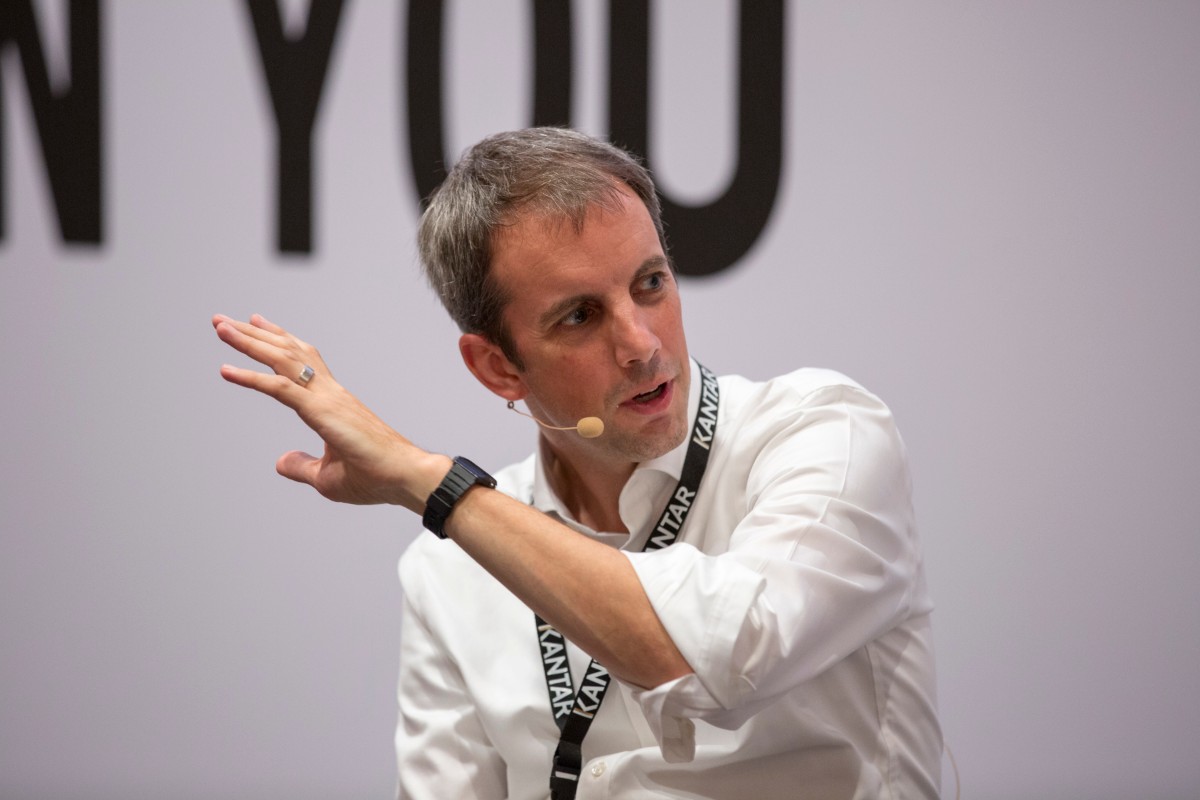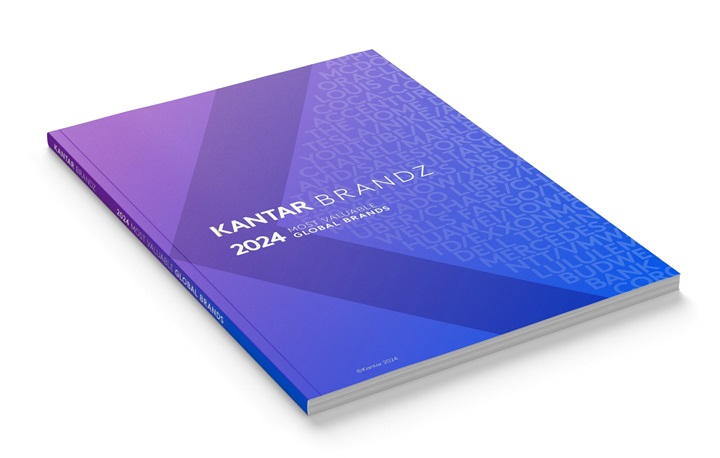Fashion can be a fickle, fast-moving industry. So how can fashion retailers, those Apparel category brands focused more on everyday clothing rather than athletic shoes or sports gear, define and grow successful brands? How can they stay on top of the latest trends while maintaining a clear, consistent positioning? And how can they ensure they remain top-of-mind so that shoppers head to their store first, rather than that of a competitor?
Kantar BrandZ data gives us some excellent insights into how Apparel brands can define their brand strategy. If a brand is lacking Meaningful Difference relative to competitors, it should start by asking questions about its current positioning.
Brands that are Meaningfully Different, but lack Salience, for example, must ask which exposures and experiences could best amplify the brand’s Meaningfully Different proposition. Ultimately, we know that brands that are strong on both Salience and Meaningful Difference generate nine times more volume share and are also more likely to grow future sales. So, Salience is worth getting right. Could our brand increase its Salience via greater media spend, perhaps? Or, by improving its creative quality?
The French apparel sector offers a nice example of the range of positionings Apparel brands can inhabit. While C&A has moderate Salience, for example, it is lacking in Meaningful Difference relative to the competition. So, its challenge in France is to better define its brand. In contrast, Zara has above-average Meaningful Difference, so its challenge in this market is to increase its Salience.

H&M is fortunate to have strong Salience and Meaningful Difference in France, but even this brand could drive further growth by catching up to the category’s leaders on these attributes. For Meaningful Difference, that means closing the gap with Levi’s; while in the realm of Salience, it’s Kiabi and Amazon who lead the pack.
One way to amplify Meaningful Difference without increasing media spend is to improve creative quality. Kantar and WARC evidence prove that creative and effective ads generate more than four times as much profit. Globally, we believe this is a significant opportunity for many apparel retailers.
Within Kantar’s LINK creative database, we see that the overall creative effectiveness of retail brands (of which Apparel brands are a subset in this database) is below average across the TV, print and outdoor media channels. Within TV in particular, the ability of retail brands to drive Impact (being noticed and remembered for the brand) is 12 percentile points lower than our overall average because TV ads from these brands tend to be less enjoyable and less well-branded. Retail brands’ TV ads are also 14 percentile points less likely to build long-term equity, primarily because they do less well at driving Difference.
Print and outdoor ads for retail ads could also be better; they tend to struggle on Likeability and Distinctiveness. More positively, digital ads for retail brands tend to perform better. They are typically above-average on Emotional Engagement, and build equity via both Meaningfulness and Difference.
Part of the reason why Zara may be bottom-right in the French market chart above, is that it famously doesn’t spend much on advertising. That being said, it’s intriguing ‘Back to work’ ad from August 2023 was a somewhat rare foray into above-the-line advertising. And Zara does also have a significant presence on social platforms such as Instagram and TikTok, where it shares its latest styles and celebrates events such as Valentine’s Day and New Year’s.
H&M, for its part, has shown it appreciates creative and effective ads. Its amazing ‘Come Together’ Wes Anderson Christmas special from 2016 recently made The Drum’s Top 100 Best Ads Ever. This epic four-minute piece of branded content starred Adrien Brody as a train conductor on the H&M Lines Winter Express train. More recently, it has launched a fun ‘Here for it’ campaign which celebrates how young women feel about fashion during formative experiences in their lives. It also recently won at the Effie Europe Awards for its UK SEO business transformation programme.
Another way to amplify Meaningful Difference is, of course, by increasing or tweaking one’s media spend, with an eye toward improving media effectiveness. Kantar’s LIFT+ CrossMedia effectiveness data provides some key insights into how apparel brands can extract more juice from their media dollars. Our data here suggests that retail brands (of which Apparel brands are once again a subset) cannot rely on organic and earned media alone. In the fast-moving world of retailers, paid touchpoints contribute 27% of overall brand impact, which is above average compared to other categories.
Given generally strong digital creative quality for retailers, it’s not surprising that our media effectiveness studies see retail brands making very good use of digital touchpoints. Facebook, Online Display and Online Video collectively deliver the most brand impact after TV ads; these are the three most cost-effective retail touchpoints. They have slightly different roles, with Online Display being better at driving associations, while Facebook is relatively stronger at driving purchase intent than building awareness.
Despite only moderate creative quality, retail brands (including apparel brands) do still manage to make significantly more cost-efficient use of TV ads than we see in other categories. They achieve this by keeping spend levels low with just moderate reach and frequency, lower by 20% than we see across all categories. Other traditional media (Radio and Outdoor) aren’t generally very cost-effective for retail brands, although Radio works better for purchase intent, and Out-of-Home (OOH) performs better for both awareness and purchase intent. The weakness of OOH as a standalone media channel for retailers makes it strongly reliant on other touchpoints; 61% of its impact comes from synergy effects with other media.
So, rather than turning to the left or turning to the right, Apparel brands should actually be turning top right! They can amplify their Meaningful Difference by ensuring that the same level of passion and creativity they pour into their new collections is also applied to the creative quality of their paid and organic creative content. A strong digital presence is an efficient place to start for Apparel brands’ media plans, but this messaging needs to connect seamlessly to TV and other media for brands that want to take home the crown.
Kantar BrandZ data gives us some excellent insights into how Apparel brands can define their brand strategy. If a brand is lacking Meaningful Difference relative to competitors, it should start by asking questions about its current positioning.
Brands that are Meaningfully Different, but lack Salience, for example, must ask which exposures and experiences could best amplify the brand’s Meaningfully Different proposition. Ultimately, we know that brands that are strong on both Salience and Meaningful Difference generate nine times more volume share and are also more likely to grow future sales. So, Salience is worth getting right. Could our brand increase its Salience via greater media spend, perhaps? Or, by improving its creative quality?
The French apparel sector offers a nice example of the range of positionings Apparel brands can inhabit. While C&A has moderate Salience, for example, it is lacking in Meaningful Difference relative to the competition. So, its challenge in France is to better define its brand. In contrast, Zara has above-average Meaningful Difference, so its challenge in this market is to increase its Salience.

H&M is fortunate to have strong Salience and Meaningful Difference in France, but even this brand could drive further growth by catching up to the category’s leaders on these attributes. For Meaningful Difference, that means closing the gap with Levi’s; while in the realm of Salience, it’s Kiabi and Amazon who lead the pack.
One way to amplify Meaningful Difference without increasing media spend is to improve creative quality. Kantar and WARC evidence prove that creative and effective ads generate more than four times as much profit. Globally, we believe this is a significant opportunity for many apparel retailers.
Within Kantar’s LINK creative database, we see that the overall creative effectiveness of retail brands (of which Apparel brands are a subset in this database) is below average across the TV, print and outdoor media channels. Within TV in particular, the ability of retail brands to drive Impact (being noticed and remembered for the brand) is 12 percentile points lower than our overall average because TV ads from these brands tend to be less enjoyable and less well-branded. Retail brands’ TV ads are also 14 percentile points less likely to build long-term equity, primarily because they do less well at driving Difference.
Print and outdoor ads for retail ads could also be better; they tend to struggle on Likeability and Distinctiveness. More positively, digital ads for retail brands tend to perform better. They are typically above-average on Emotional Engagement, and build equity via both Meaningfulness and Difference.
Part of the reason why Zara may be bottom-right in the French market chart above, is that it famously doesn’t spend much on advertising. That being said, it’s intriguing ‘Back to work’ ad from August 2023 was a somewhat rare foray into above-the-line advertising. And Zara does also have a significant presence on social platforms such as Instagram and TikTok, where it shares its latest styles and celebrates events such as Valentine’s Day and New Year’s.
H&M, for its part, has shown it appreciates creative and effective ads. Its amazing ‘Come Together’ Wes Anderson Christmas special from 2016 recently made The Drum’s Top 100 Best Ads Ever. This epic four-minute piece of branded content starred Adrien Brody as a train conductor on the H&M Lines Winter Express train. More recently, it has launched a fun ‘Here for it’ campaign which celebrates how young women feel about fashion during formative experiences in their lives. It also recently won at the Effie Europe Awards for its UK SEO business transformation programme.
Another way to amplify Meaningful Difference is, of course, by increasing or tweaking one’s media spend, with an eye toward improving media effectiveness. Kantar’s LIFT+ CrossMedia effectiveness data provides some key insights into how apparel brands can extract more juice from their media dollars. Our data here suggests that retail brands (of which Apparel brands are once again a subset) cannot rely on organic and earned media alone. In the fast-moving world of retailers, paid touchpoints contribute 27% of overall brand impact, which is above average compared to other categories.
Given generally strong digital creative quality for retailers, it’s not surprising that our media effectiveness studies see retail brands making very good use of digital touchpoints. Facebook, Online Display and Online Video collectively deliver the most brand impact after TV ads; these are the three most cost-effective retail touchpoints. They have slightly different roles, with Online Display being better at driving associations, while Facebook is relatively stronger at driving purchase intent than building awareness.
Despite only moderate creative quality, retail brands (including apparel brands) do still manage to make significantly more cost-efficient use of TV ads than we see in other categories. They achieve this by keeping spend levels low with just moderate reach and frequency, lower by 20% than we see across all categories. Other traditional media (Radio and Outdoor) aren’t generally very cost-effective for retail brands, although Radio works better for purchase intent, and Out-of-Home (OOH) performs better for both awareness and purchase intent. The weakness of OOH as a standalone media channel for retailers makes it strongly reliant on other touchpoints; 61% of its impact comes from synergy effects with other media.
So, rather than turning to the left or turning to the right, Apparel brands should actually be turning top right! They can amplify their Meaningful Difference by ensuring that the same level of passion and creativity they pour into their new collections is also applied to the creative quality of their paid and organic creative content. A strong digital presence is an efficient place to start for Apparel brands’ media plans, but this messaging needs to connect seamlessly to TV and other media for brands that want to take home the crown.



